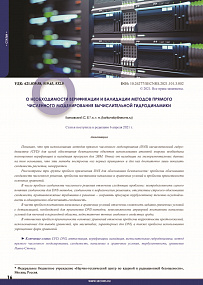It is shown that computational fluid dynamics (CFD) direct numerical simulation (DNS) codes shall be verified and validated on experimental data to be applicable for safety justification, and that it is not correct to omit experimental data validation appealing to the statement that such methods are based on so-called “first principles” and therefore the simple demonstration of the solution convergence is sufficient for such methods.
The following problem groups of the application of DNS methods to the nuclear safety justification are discussed: the problems of the numeric solution convergence, the initial and boundary conditions problems, and the problems of the applicability of the main equations.
Among the problems of convergence of the numerical solution the following problems are noted: the ambiguity of the concept of convergence applied to the DNS methods, convergence to the non-physical solutions, the lack of the convergence justification, and the opposite requirements for the solution – to maintain the instability inherent in turbulent flow and to ensure convergence.
Among the initial and boundary conditions problems, the following problems are noted: the complexity of setting the boundary conditions with the detail required for using the DNS methods, the impossibility of a priori setting of the initial conditions for the transition flows, and the lack of the accurate information about the medium properties.
In relation to the applicability of the basic equations, the problems of correctness at scales typical for DNS of the assumptions used to derive the main equations and the problem of using simplified forms of equations are noted.
Keywords: CFD, DNS, certification, verification, validation, computational fluid dynamics, direct numerical simulation, convergence, initial and boundary conditions, turbulence, Navier-Stokes equations.
Article language: Russian. Pp. 16–25. DOI: 10.26277/SECNRS.2021.101.3.002.


